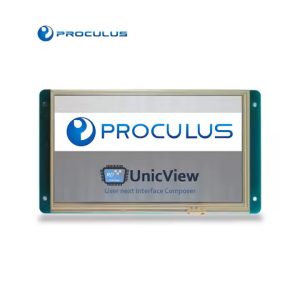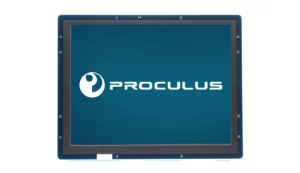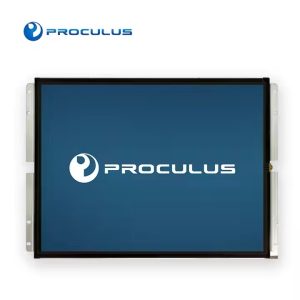A Guide on Common Industrial Memory Types of Industrial Displays: SSD And eMMC
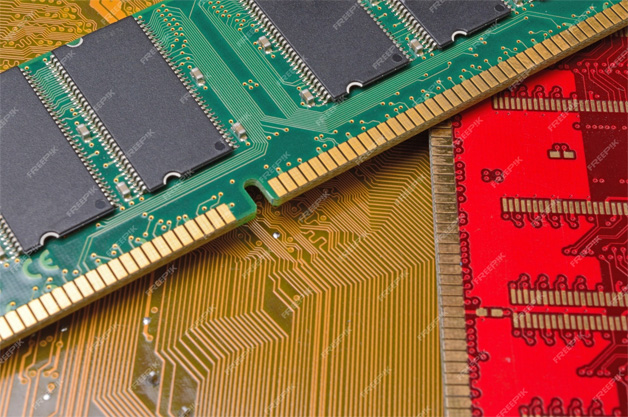
Digital storage has undergone several phases, with the transition from HDDs to SSDs being the latest. However, there are numerous types of SSDs available in the market, which can cause confusion about the best option.
While SSDs are generally better than HDDs, eMMC storage devices still exist and are often used alongside SSDs. Therefore, if you’re looking for digital storage for your industrial displays, which option should you choose?
Exploring Solid State Drives (SSDs)
One of the most significant advancements in storage technology is the introduction of Solid State Drives (SSDs). SSDs have gained popularity in both the industrial and consumer spaces due to their superior performance and reliability compared to traditional Hard Disk Drives (HDDs).
How SSDs Work
SSDs are comprised of memory ICs (Integrated Circuits) and a controller on a printed circuit board (PCB). Unlike HDDs, SSDs have no mechanical moving parts, making them more resistant to shock and vibration. This absence of moving parts also contributes to their faster data transfer speeds.
Advantages of SSDs
SSDs offer several advantages over HDDs, making them an attractive option for users seeking improved performance and reliability. Here are some key benefits of SSDs:
· Faster Data Transfer Speeds: SSDs have already surpassed HDDs in terms of data transfer speeds. This means that tasks like booting up your computer, opening applications, and accessing files and documents are significantly faster with an SSD.
· Durability and Reliability: Since SSDs lack mechanical parts, they are more resistant to shock and vibration. This makes them a more reliable option, especially in environments where physical damage may occur.
· Compact Form Factors: SSDs come in various sizes, including 2.5″ SATA SSDs, Half Slim SATA SSDs, mSATA SSDs, and m.2 SSDs. This versatility allows for easy integration into different devices, ranging from laptops to industrial-grade computers.
· Lower Power Consumption: Compared to HDDs, SSDs consume less power, leading to improved energy efficiency and longer battery life in portable devices.
Limitations of SSDs
While SSDs offer numerous advantages, they also have some limitations that users should be aware of:
· Higher Cost: SSDs tend to be more expensive than HDDs, especially for larger capacities. However, as technology advances and manufacturing costs decrease, SSD prices are gradually becoming more affordable.
· Limited Storage Capacities: At present, SSDs with capacities exceeding 1TB tend to be more expensive. However, as advancements in silicon manufacturing technology continue, we can expect larger capacity SSDs to become more accessible in the future.
Understanding Embedded Multi Media Cards (eMMC)
Another type of storage commonly used in mobile devices and embedded systems is eMMC (embedded Multi Media Cards). eMMC is a small form factor storage solution that offers cost-effective and compact storage options.
Features of eMMC
eMMC is designed to provide reliable and low-cost storage for embedded solutions such as tablets and mobile phones. Here are some key features of eMMC:
· Small Form Factor: eMMC’s small form factor makes it ideal for devices where space is limited. Its compact size reduces the device’s overall footprint and weight.
· Low Cost: Compared to other storage solutions, eMMC is more affordable, making it a popular choice for budget-conscious consumers and manufacturers.
· Low Power Consumption: eMMC’s power-efficient design ensures longer battery life in portable devices.
· Standardized Specifications: eMMC follows industry standards set by JEDEC (Joint Electron Device Engineering Council). These standards regulate everything from the mechanical dimensions of the chip to its performance capabilities.
Limitations of eMMC
While eMMC offers cost-effective storage solutions, it also has some limitations:
· Lower Speeds: Compared to SSDs, eMMC storage tends to have slower data transfer speeds. This may result in slower overall system performance, especially when dealing with large files or resource-intensive tasks.
· Limited Storage Capacity: eMMC’s storage capacity per IC (Integrated Circuit) is relatively limited compared to other storage solutions. This may pose a challenge for users requiring larger storage capacities.
Conclusion
eMMCs are the most popular storage type for indutrial displays, due to their small form factor and low cost. There is no doubt that it is an economical choice. However, compared to SSDs, eMMC design has a different controller structure that is integrated into a tiny circuit, making it difficult to perform upgrades or plug-ins without proper equipment.
Nevertheless, it is possible to desolder and resolder BGA packages back to a PCB with the right tools. New versions of eMMC, known as EMCP, now combine the eMMC IC with LPDDR RAM to increase efficiency.
Our Products
Proculus is a leading provider of reliable all-in-one android solutions with various eMMC specifications, including 8GB, 16GB, 32GB and 64 GB. They offer a wide range of specialized modules that are expertly designed for your concrete application.
They are equipped with high-performance processor and Android O.S, providing you with enough flexibility and convenience, while delivering the durability and performance required in healthcare environments.
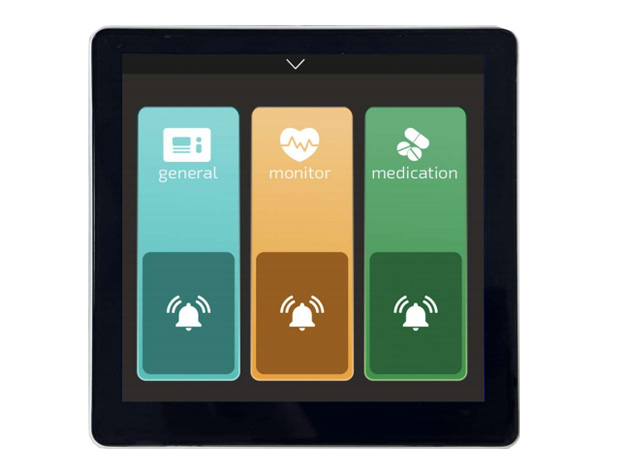

 English
English
